Starting from last week, GoGo Travel is introducing Mongolian provinces as travel destinations to provide the readers and travellers with comprehensive travel information about Mongolia. This week, it’s one of the three Eastern provinces, Dornogobi or the Eastern Gobi. The name explains the landscape of the province all – it’s a combination of steppe and desert (almost no lakes/rivers), and a typical scenery here will be wide open steppes with occasional hills, where you can admire the Gobi sunrise and the sunset at its’ best.
Situated in the south eastern part of the Gobi Desert, Dornogobi borders with Dundgobi (Middle Gobi), Umnugobi (South Gobi), Sukhbaatar and Khentii provinces, as well as People’s Republic of China, covering an area of 109500 sq.km. The population of the province is 63500 (2014) that mainly consists of Khalkha Mongol ethnic group. The centre Sainshand sits at 465km from Ulaanbaatar, and offers an excellent accessibility to travellers as it’s connected with Ulaanbaatar with paved road, and the legendary Trans-Mongolian railroad. Zamiin Uud is one of the biggest border ports that is open to 3rd nationals.
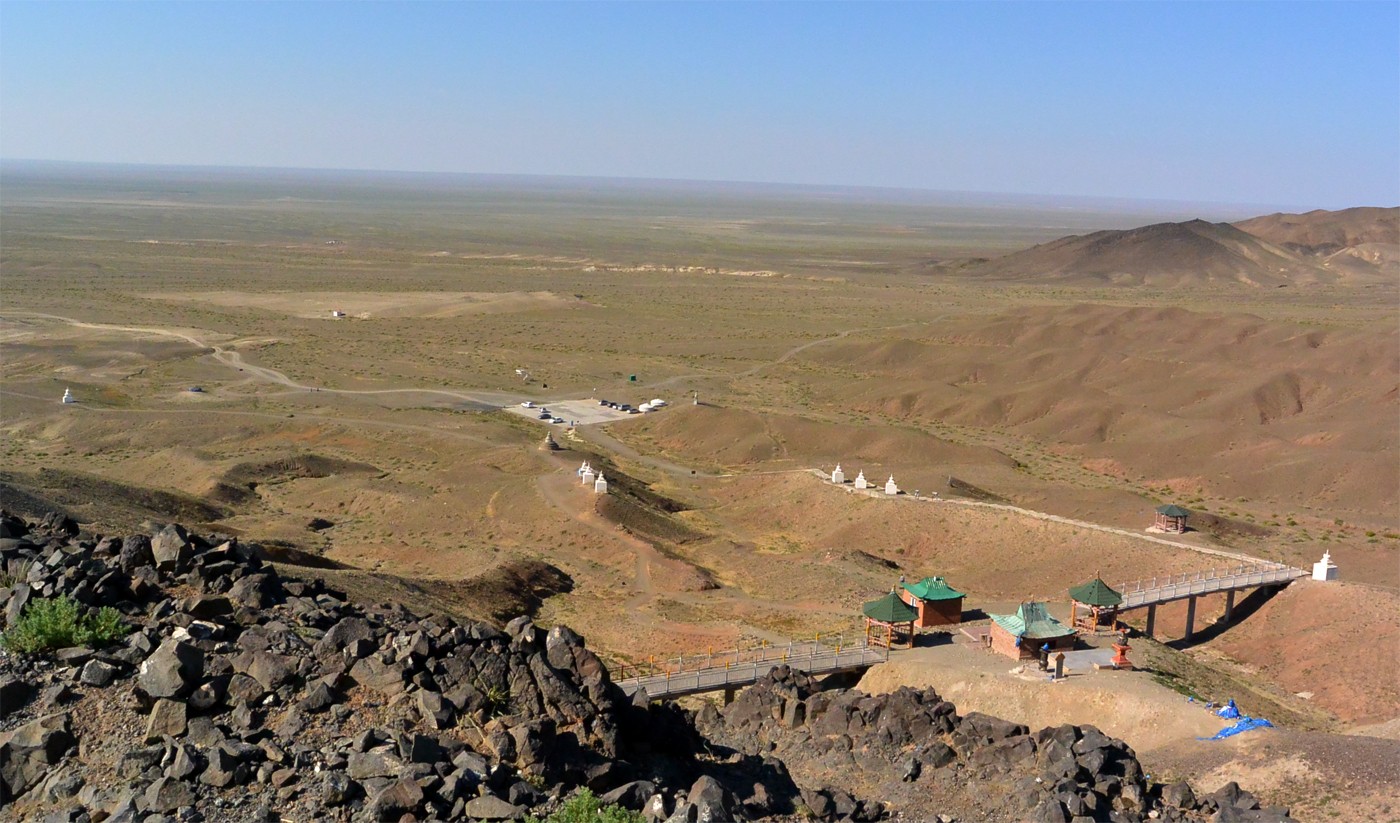
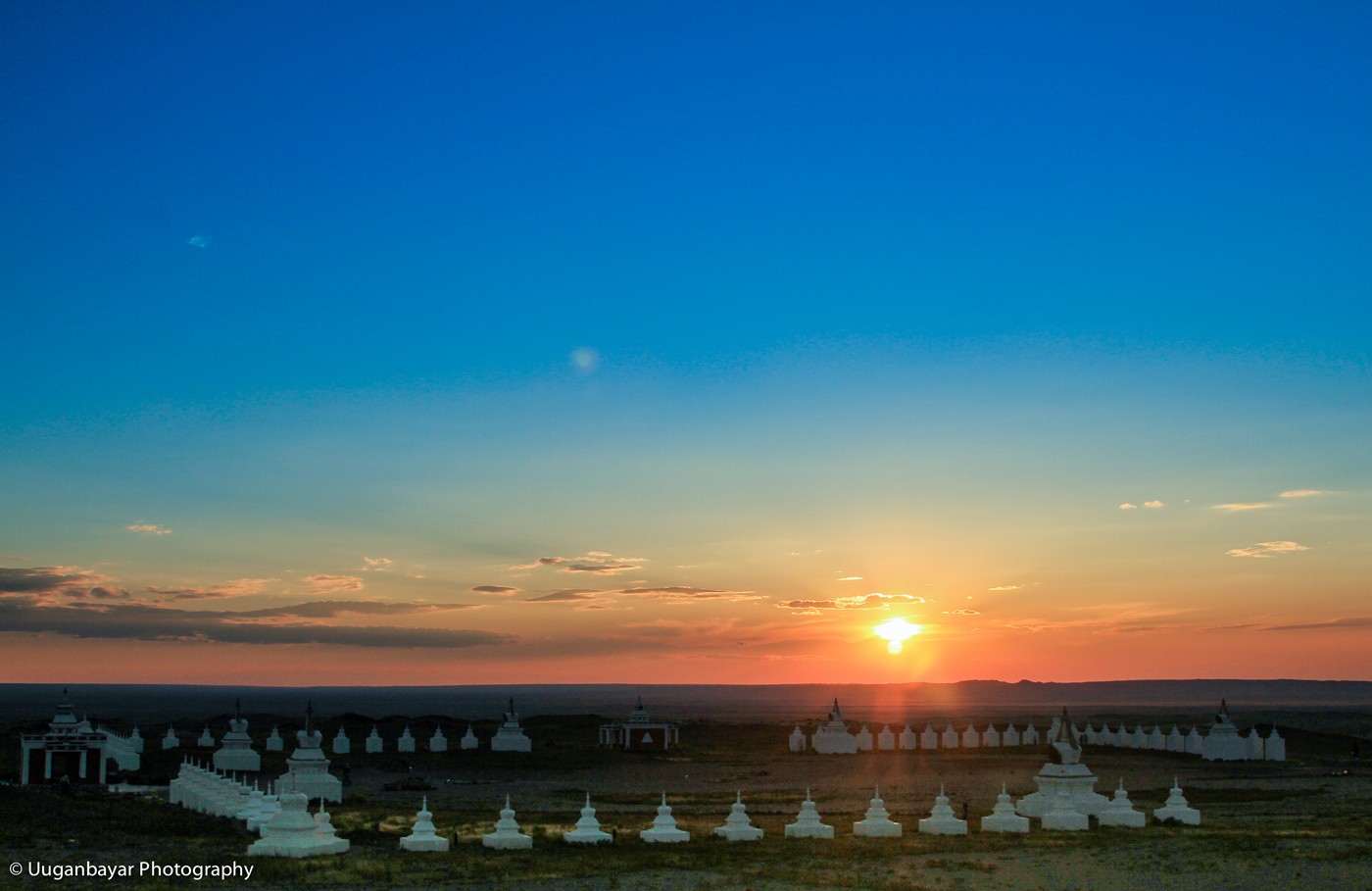
Dornogobi is home to the celebrated Khamar Monastery, which was founded by the famous Mongolian Buddhist envoy Danzanravjaa Khutagt in 1820s as one of his “Ideal 3 monasteries of the Gobi Shambala” (the other 2 are in South Gobi). The area’s believed to be a world energy centre and people come from around the world to access the powerful energy, which is reputed to result in good health, fertility and prosperity. Khamar Monastery and the World Energy Centre is only 45km from Sainshand.
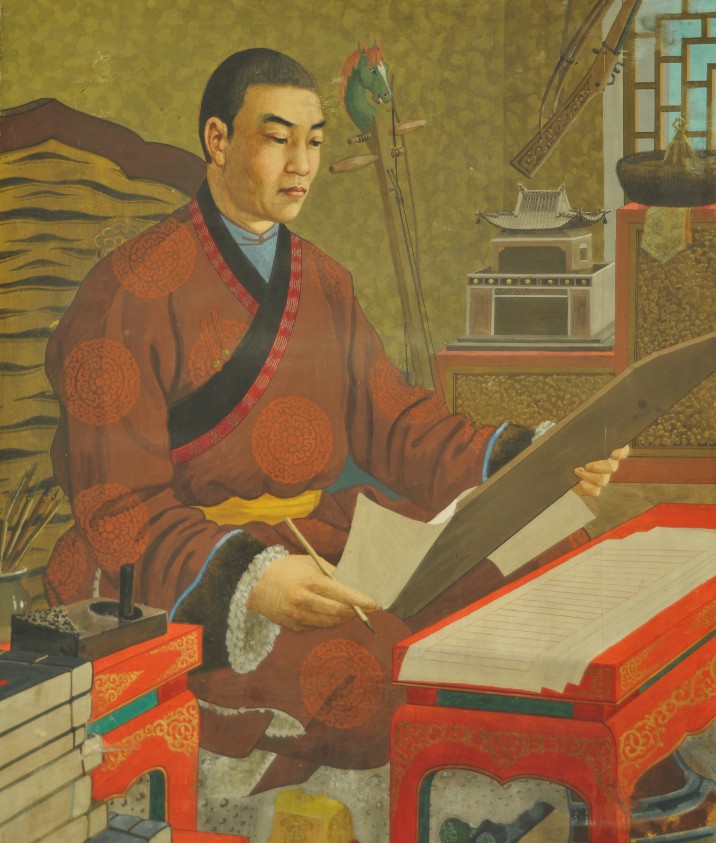 Danzanravjaa Khutagt played a vital role in Mongolian Buddhism, he was a believer of the Red Hat sect of Buddhism and was renowned for being an innovative thinker (philosopher, architect, medicine man), poet, playwright and a scupltor. Born as the only child of a mendicant, Danzanravjaa showed signs of genius at very early ages and was proclaimed to be the 5th reincarnation of “Goviin Dogshin noyon khutagt” (can be translated as His Holiness Ferocious Noble of the Gobi) at a young age. Even it’s told that when he was only 7 Danzanravjaa told “Khurmast tenger” (Divine sky), one of his most famous poems, during a banquet unexpectedly. The beautiful song “Ulemjiin chanar” written and originally sang by Danzanravjaa himself is still sung at festivals and weddings in Mongolia all year around. During his 54 years of life Danzanravjaa wrote many poems and songs, and several plays (he wrote a total of some 500 works in Mongolian and Tibetan), and further founded the first drama theatre in Mongolia, where he directed some of his plays. He was also well-known for his love for beautiful women, and drinking habits.
Danzanravjaa Khutagt played a vital role in Mongolian Buddhism, he was a believer of the Red Hat sect of Buddhism and was renowned for being an innovative thinker (philosopher, architect, medicine man), poet, playwright and a scupltor. Born as the only child of a mendicant, Danzanravjaa showed signs of genius at very early ages and was proclaimed to be the 5th reincarnation of “Goviin Dogshin noyon khutagt” (can be translated as His Holiness Ferocious Noble of the Gobi) at a young age. Even it’s told that when he was only 7 Danzanravjaa told “Khurmast tenger” (Divine sky), one of his most famous poems, during a banquet unexpectedly. The beautiful song “Ulemjiin chanar” written and originally sang by Danzanravjaa himself is still sung at festivals and weddings in Mongolia all year around. During his 54 years of life Danzanravjaa wrote many poems and songs, and several plays (he wrote a total of some 500 works in Mongolian and Tibetan), and further founded the first drama theatre in Mongolia, where he directed some of his plays. He was also well-known for his love for beautiful women, and drinking habits.
Before the Stalinist purge in the 1930s, Khamar Monastery was a complex Buddhist centre in the Eastern Mongolia - had 4 religious schools, 80 temples that housed 500 monks. During the blood-stained purge, one of the head monks of Khamar Monastery buried plentiful of the invaluable religious items such as sutras, Buddha scultures etc in the rocks, and secretly asked his children to guard. And after Mongolian democratic revolution in 1990 that set religion free, his children handed over those priceless objects to the people of Dornogobi. Most of the items (many of which belonged to Danzanravjaa himself) are now proudly exhibited in the Danzanravjaa Museum in Sainshand town.
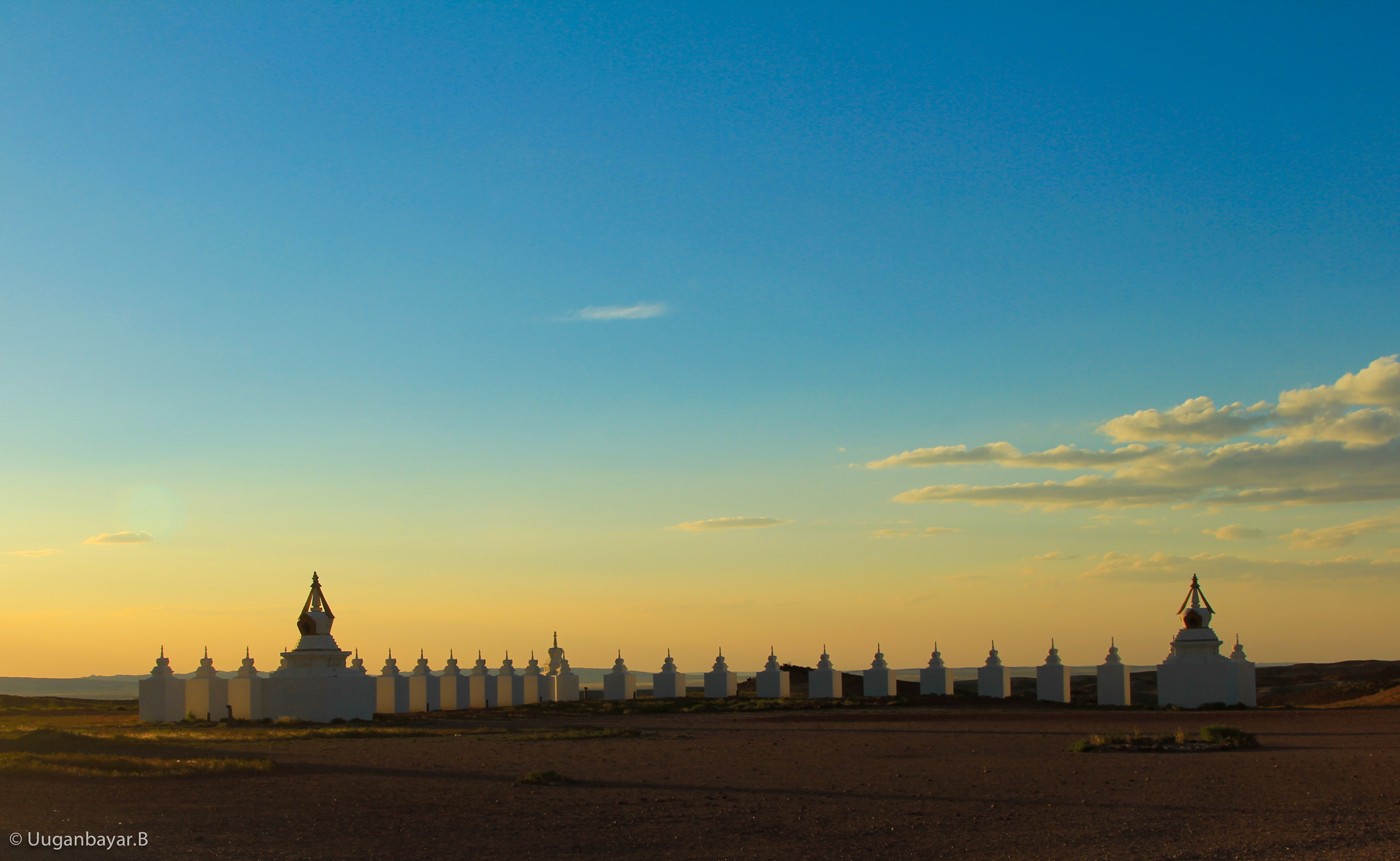
Dornogobi offers travellers much more than Khamar monastery, there’s Mt. Bayanzurkh where people go, walk around “ovoo” three times tossing milk and vodka to the air (for the spirit of the mountain) and make a wish believing that it comes true within a year or two. Also there are 2 places, where travellers can see petrified ancient forest and dinosaur footprints.
Best time to visit: We’d recommend travellers visit to Dornogobi all year around due to its’ milder winters compared to the central and northern parts of Mongolia. However, in summer especially in July and August, the temperature reaches +40’ C and quite dry. May, June, September, and October tend to be the best time to visit the area.
How to get there: drive on the Ulaanbaatar-Zamiin Uud paved road, or you can jump on the everyday train to Sainshand (departs at 09:43), Zamiin Uud (departs at 17:20; Fridays at 16:30) from Ulaanbaatar station.
Where to stay: there are several hotels in Sainshand, and Ger motels at Khamar Monastery.
For a wonderful Dornogobi tours and travel experiences please contact local Mongolian travel companies such as Premium Travel Mongolia – some travel companies offer set group tours and some may tailor excellent tours especially for you.
Image of Danzanravjaa Khutagt is used from http://ravjaamuseum.mn/.
Travel photos are courtesy of Uuganbayar Bazardari.
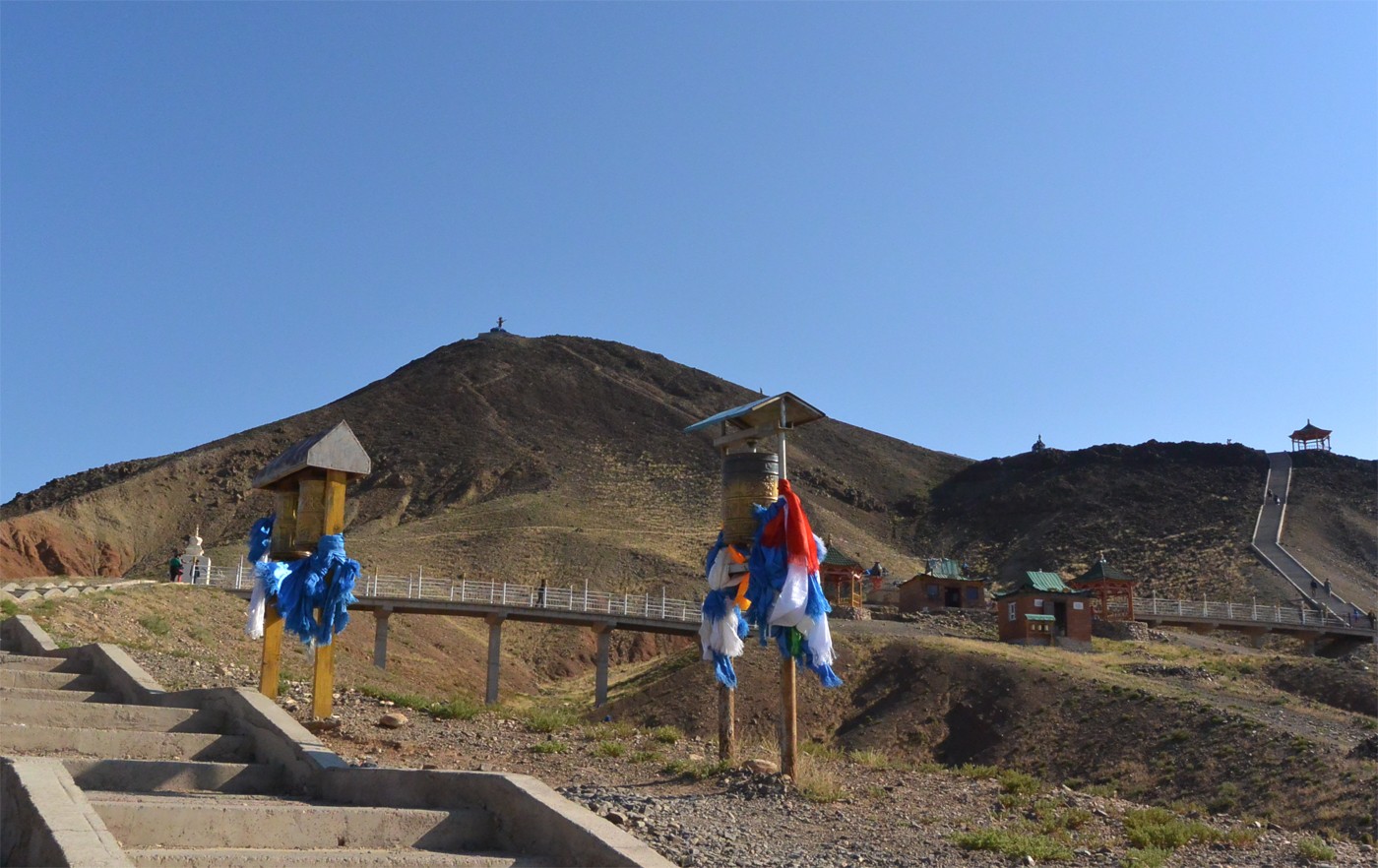

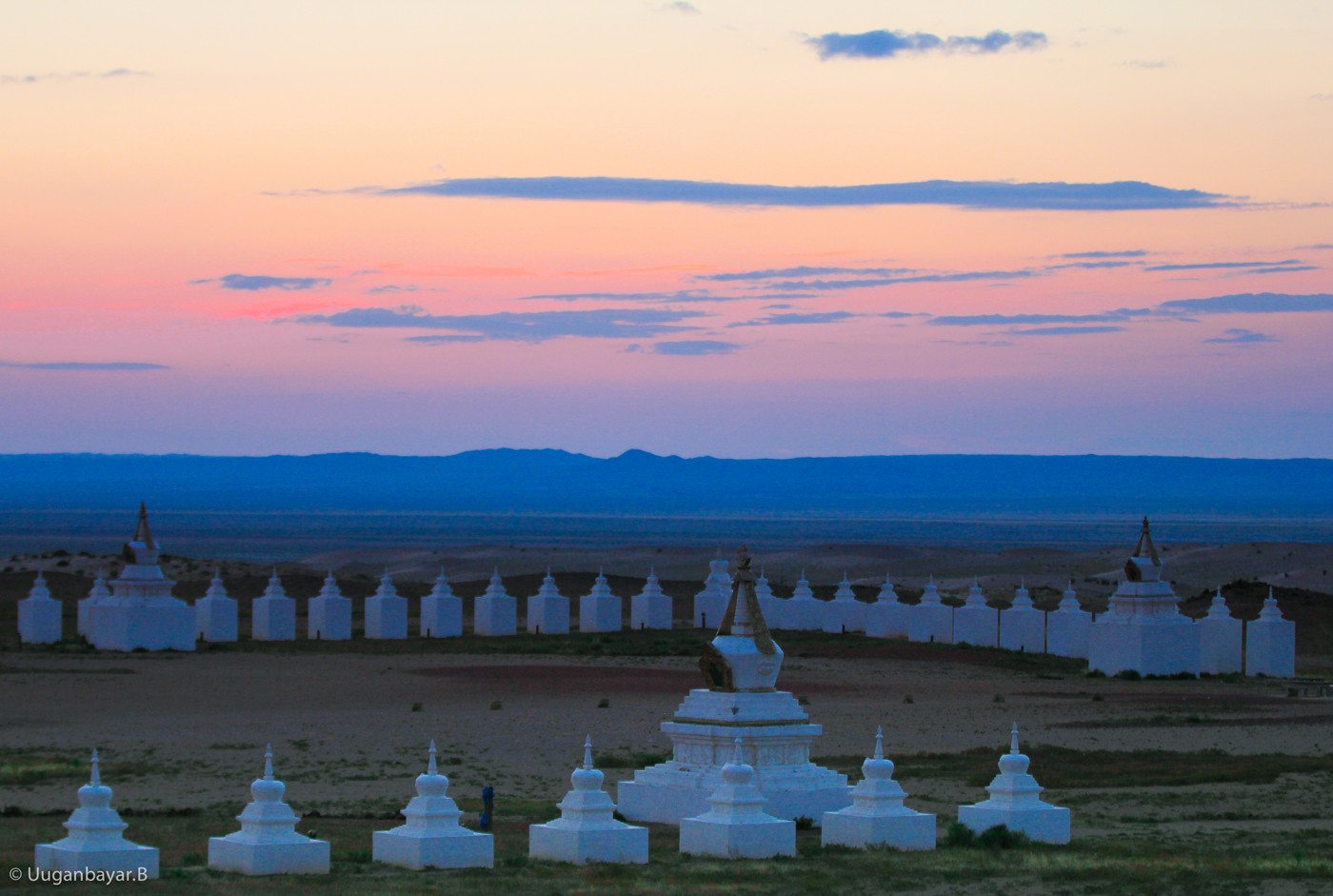
 Prepared only for GoGo Travel by Zola
Prepared only for GoGo Travel by Zola
(Co-founder & Partner of Premium Travel Mongolia LLC.
www.mongoliatravelmarket.com)
Copyright © 2016. All rights reserved.
Starting from last week, GoGo Travel is introducing Mongolian provinces as travel destinations to provide the readers and travellers with comprehensive travel information about Mongolia. This week, it’s one of the three Eastern provinces, Dornogobi or the Eastern Gobi. The name explains the landscape of the province all – it’s a combination of steppe and desert (almost no lakes/rivers), and a typical scenery here will be wide open steppes with occasional hills, where you can admire the Gobi sunrise and the sunset at its’ best.
Situated in the south eastern part of the Gobi Desert, Dornogobi borders with Dundgobi (Middle Gobi), Umnugobi (South Gobi), Sukhbaatar and Khentii provinces, as well as People’s Republic of China, covering an area of 109500 sq.km. The population of the province is 63500 (2014) that mainly consists of Khalkha Mongol ethnic group. The centre Sainshand sits at 465km from Ulaanbaatar, and offers an excellent accessibility to travellers as it’s connected with Ulaanbaatar with paved road, and the legendary Trans-Mongolian railroad. Zamiin Uud is one of the biggest border ports that is open to 3rd nationals.


Dornogobi is home to the celebrated Khamar Monastery, which was founded by the famous Mongolian Buddhist envoy Danzanravjaa Khutagt in 1820s as one of his “Ideal 3 monasteries of the Gobi Shambala” (the other 2 are in South Gobi). The area’s believed to be a world energy centre and people come from around the world to access the powerful energy, which is reputed to result in good health, fertility and prosperity. Khamar Monastery and the World Energy Centre is only 45km from Sainshand.
 Danzanravjaa Khutagt played a vital role in Mongolian Buddhism, he was a believer of the Red Hat sect of Buddhism and was renowned for being an innovative thinker (philosopher, architect, medicine man), poet, playwright and a scupltor. Born as the only child of a mendicant, Danzanravjaa showed signs of genius at very early ages and was proclaimed to be the 5th reincarnation of “Goviin Dogshin noyon khutagt” (can be translated as His Holiness Ferocious Noble of the Gobi) at a young age. Even it’s told that when he was only 7 Danzanravjaa told “Khurmast tenger” (Divine sky), one of his most famous poems, during a banquet unexpectedly. The beautiful song “Ulemjiin chanar” written and originally sang by Danzanravjaa himself is still sung at festivals and weddings in Mongolia all year around. During his 54 years of life Danzanravjaa wrote many poems and songs, and several plays (he wrote a total of some 500 works in Mongolian and Tibetan), and further founded the first drama theatre in Mongolia, where he directed some of his plays. He was also well-known for his love for beautiful women, and drinking habits.
Danzanravjaa Khutagt played a vital role in Mongolian Buddhism, he was a believer of the Red Hat sect of Buddhism and was renowned for being an innovative thinker (philosopher, architect, medicine man), poet, playwright and a scupltor. Born as the only child of a mendicant, Danzanravjaa showed signs of genius at very early ages and was proclaimed to be the 5th reincarnation of “Goviin Dogshin noyon khutagt” (can be translated as His Holiness Ferocious Noble of the Gobi) at a young age. Even it’s told that when he was only 7 Danzanravjaa told “Khurmast tenger” (Divine sky), one of his most famous poems, during a banquet unexpectedly. The beautiful song “Ulemjiin chanar” written and originally sang by Danzanravjaa himself is still sung at festivals and weddings in Mongolia all year around. During his 54 years of life Danzanravjaa wrote many poems and songs, and several plays (he wrote a total of some 500 works in Mongolian and Tibetan), and further founded the first drama theatre in Mongolia, where he directed some of his plays. He was also well-known for his love for beautiful women, and drinking habits.
Before the Stalinist purge in the 1930s, Khamar Monastery was a complex Buddhist centre in the Eastern Mongolia - had 4 religious schools, 80 temples that housed 500 monks. During the blood-stained purge, one of the head monks of Khamar Monastery buried plentiful of the invaluable religious items such as sutras, Buddha scultures etc in the rocks, and secretly asked his children to guard. And after Mongolian democratic revolution in 1990 that set religion free, his children handed over those priceless objects to the people of Dornogobi. Most of the items (many of which belonged to Danzanravjaa himself) are now proudly exhibited in the Danzanravjaa Museum in Sainshand town.

Dornogobi offers travellers much more than Khamar monastery, there’s Mt. Bayanzurkh where people go, walk around “ovoo” three times tossing milk and vodka to the air (for the spirit of the mountain) and make a wish believing that it comes true within a year or two. Also there are 2 places, where travellers can see petrified ancient forest and dinosaur footprints.
Best time to visit: We’d recommend travellers visit to Dornogobi all year around due to its’ milder winters compared to the central and northern parts of Mongolia. However, in summer especially in July and August, the temperature reaches +40’ C and quite dry. May, June, September, and October tend to be the best time to visit the area.
How to get there: drive on the Ulaanbaatar-Zamiin Uud paved road, or you can jump on the everyday train to Sainshand (departs at 09:43), Zamiin Uud (departs at 17:20; Fridays at 16:30) from Ulaanbaatar station.
Where to stay: there are several hotels in Sainshand, and Ger motels at Khamar Monastery.
For a wonderful Dornogobi tours and travel experiences please contact local Mongolian travel companies such as Premium Travel Mongolia – some travel companies offer set group tours and some may tailor excellent tours especially for you.
Image of Danzanravjaa Khutagt is used from http://ravjaamuseum.mn/.
Travel photos are courtesy of Uuganbayar Bazardari.



 Prepared only for GoGo Travel by Zola
Prepared only for GoGo Travel by Zola
(Co-founder & Partner of Premium Travel Mongolia LLC.
www.mongoliatravelmarket.com)
Copyright © 2016. All rights reserved.

